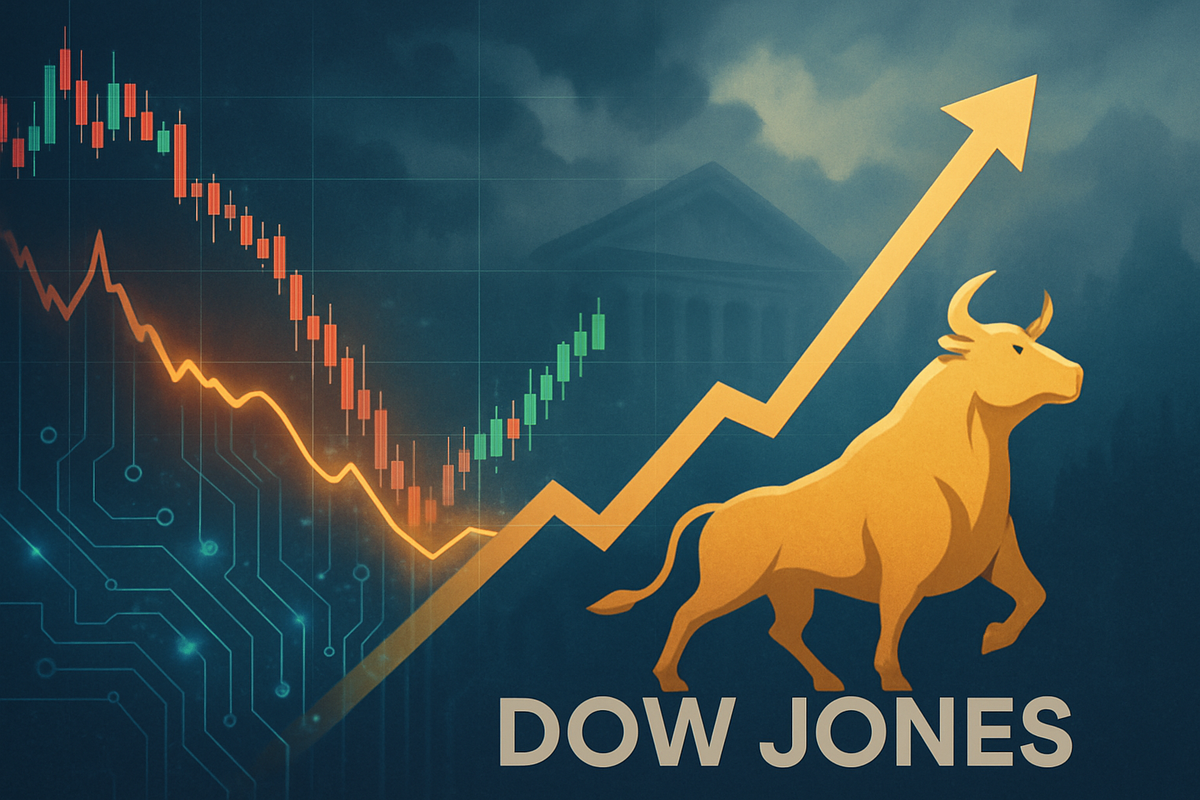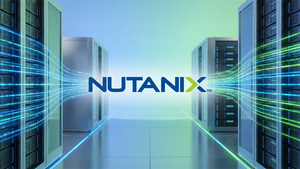
New York, NY – October 10, 2025 – The Dow Jones Industrial Average opened higher today, climbing 207 points, or 0.5%, signaling a potential calming effect at the close of what has been a notably volatile week for financial markets. This upward movement offers a fragile sense of relief for investors navigating a complex economic landscape marked by an ongoing U.S. government shutdown, persistent enthusiasm for artificial intelligence, and a palpable anticipation of critical economic data and corporate earnings reports.
The immediate implication of the Dow's positive open is a tentative boost in investor sentiment, suggesting a possible stabilization after a period of significant fluctuation. While a higher Friday close traditionally sets a positive tone for the weekend, the underlying uncertainties – particularly the lack of crucial economic indicators due to the government shutdown – mean that this uptick is viewed with cautious optimism. The market remains in a "wait-and-see" mode, with participants closely monitoring upcoming corporate earnings for clearer signals of economic health.
Navigating the Choppy Waters: A Week of Market Swings and Economic Standoffs
The week leading up to October 10, 2025, has been a testament to the market's resilience and its susceptibility to both political impasses and technological fervor. The Dow's higher opening today comes after a period of significant swings, reflecting a tug-of-war between bullish sentiment, largely fueled by the AI boom, and anxieties stemming from broader economic uncertainties.
A central narrative of the week has been the more than week-old U.S. government shutdown. This political stalemate has not only delayed the release of vital economic indicators, such as inflation and jobs data, but has also complicated the Federal Reserve's ability to accurately assess the economy and plot its future interest rate trajectory. Despite these concerns, some market observers have suggested that the market has largely "shrugged off" the shutdown, perhaps viewing its impact as typically short-lived. However, the prolonged absence of official data has heightened the importance of upcoming corporate earnings reports, which are now being scrutinized for any insights they might offer into the economy's underlying health.
Adding another layer of complexity, investor sentiment surveys for the week ending October 8, 2025, indicated an increase in optimism among individual investors, with bullish sentiment rising to 45.9% and remaining above its historical average. This optimism, however, was tempered by profit-taking tendencies observed earlier in the week. The Nasdaq (NASDAQ: COMP) and S&P 500 (NYSEARCA: SPY) experienced marginal losses after hitting record intraday highs, as investors locked in gains, underscoring the volatile nature of the current market environment.
Amidst these fluctuations, the "AI euphoria" has continued to be a dominant force. While some analysts have voiced concerns about the "circular nature" of AI dealmaking and potentially overstretched valuations, the fear of missing out on further advances in the AI boom has continued to fuel rallies in specific sectors. Falling Treasury yields and a drop in crude oil prices also played a role in "smoothing the path" for stocks, contributing to the positive sentiment observed at today's open. The market's performance this week underscores a delicate balance between fundamental economic realities and speculative enthusiasm.
Corporate Fortunes in the Balance: Winners and Losers in a Volatile Market
The current market volatility, exacerbated by economic uncertainties and the ongoing AI boom, presents a mixed bag for public companies. While some are poised to capitalize on the prevailing trends, others face significant headwinds. The Dow's higher opening today, while positive, does not erase the underlying pressures affecting various sectors.
Potential Winners:
Companies heavily invested in Artificial Intelligence (AI) and related technologies continue to be prime beneficiaries. Nvidia (NASDAQ: NVDA), for instance, has consistently seen its stock close higher, even when the broader market has trended downwards, thanks to robust demand for its chips. Other semiconductor manufacturers and software companies providing AI infrastructure or applications, such as Advanced Micro Devices (NASDAQ: AMD) and Microsoft (NASDAQ: MSFT), are likely to continue their upward trajectory as long as AI euphoria persists and demand remains strong. These companies benefit from the fear of missing out (FOMO) among investors, who are willing to overlook valuation concerns in pursuit of growth.
Furthermore, companies with strong balance sheets and consistent dividend payouts in defensive sectors, such as utilities or consumer staples, might see increased interest from investors seeking stability amidst volatility. While not directly benefiting from the AI boom, their predictable performance makes them attractive during uncertain times.
Potential Losers:
Companies that are highly sensitive to economic data and consumer spending, especially those in sectors directly impacted by a prolonged government shutdown, could face significant challenges. Retailers, hospitality, and travel industries might experience reduced consumer confidence and spending if the shutdown continues or if economic data, once released, paints a bleaker picture. Companies with high debt loads or those heavily reliant on stable interest rates could also suffer if the Federal Reserve's policy becomes less predictable due to data delays.
Additionally, companies with overstretched valuations that are not directly tied to the AI narrative, or those that fail to meet earnings expectations in the upcoming reporting season, could experience significant corrections. The market's current "wait-and-see" approach means that any negative surprises could be met with swift and harsh investor reactions, leading to substantial stock price declines. The broader implications of a potentially slowing economy, even if temporary, could also impact cyclical industries that rely on robust economic growth.
Broader Implications: A Shifting Economic Landscape
The current market dynamics, characterized by volatility and a cautious rebound, fit into several broader industry trends and carry significant wider implications. The interplay of technological advancement, political gridlock, and monetary policy uncertainty is reshaping the financial landscape, with potential ripple effects across various sectors.
Firstly, the enduring "AI euphoria" highlights a significant industry trend: the increasing dominance of technology-driven growth. This trend suggests a continued divergence between tech-heavy growth stocks and more traditional value stocks, especially if the broader economic recovery remains uneven. The concentration of market gains in a few large-cap tech firms raises questions about market breadth and potential systemic risks if the AI bubble were to burst or deflate. Competitors and partners in the tech ecosystem are being forced to accelerate their own AI strategies, creating a competitive arms race that could lead to further consolidation or innovative breakthroughs.
Secondly, the U.S. government shutdown underscores the growing impact of political instability on economic forecasting and market sentiment. The delay in releasing crucial economic data not only hampers the Federal Reserve's ability to make informed decisions but also creates a vacuum of information that can lead to increased speculation and volatility. This situation could prompt calls for greater fiscal responsibility and reform, as well as a re-evaluation of how markets price in political risk. Historically, government shutdowns have typically had short-lived market impacts, but a prolonged or more frequent occurrence could erode investor confidence in the stability of the U.S. economy and its governance.
Thirdly, the Federal Reserve's cautious stance on interest rates, coupled with the lack of reliable data, points to a broader trend of central banks navigating uncharted waters. The prospect of further rate cuts, even as inflation remains a concern, reflects a delicate balancing act. This policy uncertainty has ripple effects on bond markets, currency valuations, and corporate borrowing costs, influencing investment decisions across the board. The situation draws parallels to periods of economic uncertainty where monetary policy had to adapt to evolving, often incomplete, economic pictures, emphasizing the need for flexibility and clear communication from central bank leaders.
What Comes Next: Navigating the Path Forward
The path forward for the market, following this week's volatility and the Dow's cautious rebound, is fraught with both opportunities and challenges. Short-term and long-term possibilities hinge significantly on the resolution of the government shutdown, the trajectory of corporate earnings, and the Federal Reserve's monetary policy decisions.
In the short term, the market will be keenly watching for any developments regarding the U.S. government shutdown. A swift resolution could inject a dose of certainty and lead to the release of delayed economic data, providing a clearer picture for investors and the Federal Reserve. Corporate earnings reports, particularly those from major technology companies, will also be critical. Strong earnings, especially from AI-driven firms, could sustain the current optimism, while disappointing results could trigger another wave of profit-taking and market corrections. Companies may need to adapt strategically by focusing on operational efficiency and maintaining healthy balance sheets to weather potential downturns.
Looking further ahead, the long-term outlook will be shaped by how companies integrate and monetize AI technologies. The "AI euphoria" could mature into sustained, productivity-driven growth, benefiting early adopters and innovators. However, there's also the risk of an AI bubble, which could lead to significant market adjustments if valuations become unsustainable. Market opportunities may emerge in sectors that leverage AI to transform traditional industries, while challenges could arise for companies unable to adapt to this technological shift.
Potential scenarios include a "soft landing" where the economy avoids a recession, supported by continued tech innovation and a well-managed monetary policy. Alternatively, a prolonged government shutdown or unexpectedly weak economic data could trigger a more significant market downturn. Investors should also consider the potential for increased regulatory scrutiny on the tech sector, especially concerning AI, which could impact future growth trajectories. The coming months will likely be a period of strategic pivots for many businesses, as they adapt to evolving economic realities and technological advancements.
A Week in Review: Key Takeaways and Future Outlook
This week's market performance, culminating in the Dow's higher opening today, offers a microcosm of the current financial landscape: a delicate balance between persistent innovation-driven optimism and significant macroeconomic uncertainties. The primary takeaway is the market's resilience in the face of political gridlock, particularly the U.S. government shutdown, yet its continued susceptibility to profit-taking and valuation concerns. The "AI euphoria" remains a powerful force, driving specific sectors, but it coexists with a broader "wait-and-see" attitude as investors await clearer economic signals.
Moving forward, the market will likely remain sensitive to external shocks and incoming data. The resolution of the government shutdown is paramount, as it will unlock crucial economic indicators that the Federal Reserve needs to guide its monetary policy. Corporate earnings season will provide the next significant litmus test, offering insights into the real-world impact of current economic conditions and technological trends on public companies. The divergence between AI-driven growth stocks and other sectors is expected to continue, challenging investors to carefully assess individual company fundamentals rather than relying solely on broad market movements.
Ultimately, the significance of this week lies in its demonstration of a market grappling with a new paradigm where technological disruption, political dynamics, and evolving monetary policy converge. The lasting impact will depend on how swiftly and effectively these challenges are addressed. Investors should closely watch for signs of a breakthrough in the government shutdown, the tone and guidance from corporate earnings calls, and any shifts in the Federal Reserve's communication. Furthermore, monitoring the development and adoption rates of AI across various industries will be crucial for identifying long-term growth opportunities and potential risks. The coming months will demand vigilance and strategic foresight from all market participants.
This content is intended for informational purposes only and is not financial advice






